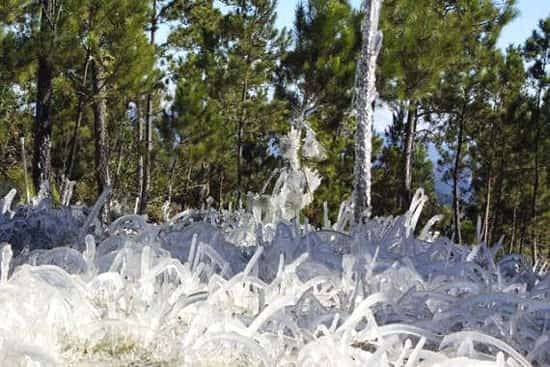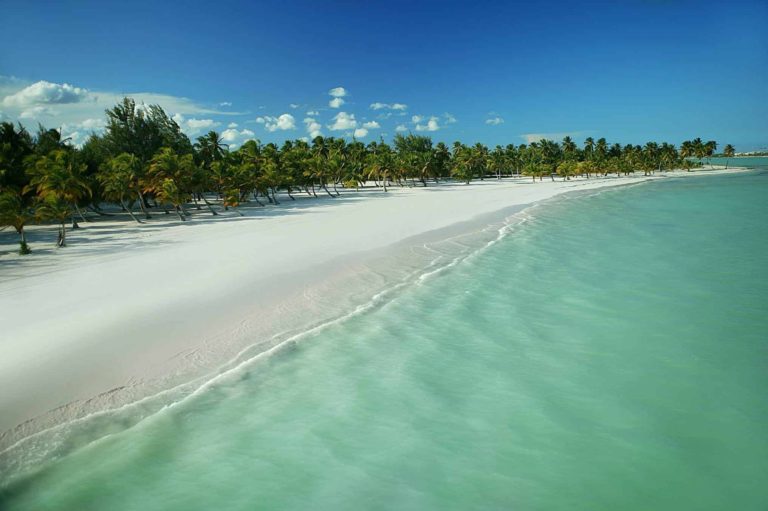Interesting Facts About the Dominican Republic Weather

A historical compilation made by the website specialized in Dominican meteorology, acqweather.com, shows a meteorological report of the country for January 1956. According to the document.
By that date there had been another extreme drop in temperature, which was because of that during the month they crossed the island four cold fronts causing two of them general rains in almost all the country during days 1 to 3 and 28 to 31.
A cold fall east of Cape Hatteras, USA, in the first days of the month, caused a decrease in temperatures, registering a minimum of 0.0 ° C in the stations of Hondo Valle and Constanza, and in Ciudad Trujillo (Santo Domingo) the thermometer went down until 11.6 degrees C on January 7.
Contents
What is the hottest month in Dominican Republic?
The average temperature of the country is 28 ° C. August is the hottest month, and January is the coolest. In summer, the highest temperature usually reaches 34 ° C and in winter the lowest is 14 ° C, with the exception of mountainous areas where it usually drops to 0 ° C.
The coldest and hottest temperature ever recorded in Dominican Republic
The World Meteorological Organization establishes a period of 30 years to make a comparison of temperatures and delimit the maximum and minimum extremes.
Thus, according to data from the Department of Climatology of the National Meteorological Office (Onamet), Santo Domingo saw a minimum record of 11 ° C for February 5, 1951 and January 7, 1957.
In the capital, another record minimum temperature has been recorded on the Las Américas Highway, when it dropped to 8 ° C in January and March 2007.
In the interior of the country, in Polo, Barahona, the cold was felt at 6 ° C on February 8 and 15, 1951, and in Rancho Arriba, San José de Ocoa, was at 3.5 ° C on January 14, 1956.
According to the data and the period compared, the coldest temperatures were recorded between 1950 and 1980, and January, February, and March have been the coldest months.
In Cevicos, in Sánchez Ramírez, it dropped to 2 ° C on December 26, 1979. In San José de Ocoa the climate was at 5 ° C on January 11, 1956.
It is popularly said that the Dominican Republic has only one season: summer, and a little cold at Christmas. That heat felt throughout most of the year has reached peak points, especially between June and September. In March 1952, the inhabitants of San Rafael del Yuma had to wear very fresh clothes to withstand the 42 ° C that was recorded.
The same they had to do in La Victoria, on April 23, 1958 under that same temperature, and in Duvergé in August 1965 when it rose to 42.8 ° C and 42.2 ° C.
Others who experienced a stifling heat of 41 ° C were residents in Moca, in May 1997; Elías Piña, in April 1965; in Salcedo, in September 1956; in Bonao, in June of 1950 and Santiago, in September of 1960.
In Pepillo Salcedo there were 41.2 ° C in July 1962 and 40.5 ° C in La Vega in April 1959. According to the Onamet report, Santo Domingo arrived at almost 40 ° C when on May 29, 2002, the temperature rose to 39.5 ° C.
Other top records for the Dominican capital have been 36 ° C in July 1995 and 35.7 ° C in July 1990. Santo Domingo approached 40 ° C on May 29, 2002, when the temperature rose to 39.5 ° C.
What is the climate of the Dominican Republic?
The dominant climate type in the Dominican Republic is the Tropical Wet of Sabana, but there are also different microclimates.
Temperatures above 18 ° C with slight differences in the cold months and low rainfall (observed in Santo Domingo).
What is the average rainfall in Dominican Republic?
The climate is tropical in Santo Domingo. Most months of the year are marked by significant rainfall. The short dry season has little impact. This climate is considered Am according to the Köppen-Geiger climate classification.
The average annual temperature is 25.7 ° C in Santo Domingo. Precipitation here averages 1661 mm.
Is there a rainy season in the Dominican Republic?
As for the rains in the Dominican Republic, along the eastern and southern coasts, there is a rainy season from the end of April to October, while the northern coast, exposed to trade winds, is rainy throughout the year, although on the northwest coast there is a decrease in rainfall from June to September.
Is it the rainy season in Punta Cana?
The rainy season in Punta Cana covers the months from May to October, the chances of rain are greater during this time than the rest of the year. In addition, humidity sometimes exceeds 80%.
Although the climate is warm and tropical during the summer months, June, July, and August can present temperatures above 31ºC, although the months with the highest temperatures are September and October, with a greater probability of rain precipitation, October is also the wettest month of the year.
What is the best month to go to the Dominican Republic?
In the Dominican Republic, the weather is very good throughout the country during February, March and April.
If you are interested in visiting Santo Domingo, you should know that the most favorable months at the climate level to go to Santo Domingo are January, February, March, April, November and December.
While on the contrary, it is advisable to avoid the rainiest months in this city are May, July and August. The cities with the best climate are Puerto Plata, Punta Cana, Barahona, Montecristi and Sosúa with a favorable climate at least 11 months a year.
What is hurricane season in Dominican Republic?
From June to November, the Dominican Republic can be hit by hurricanes, tropical cyclones of the Atlantic and the Caribbean, which are however more likely between August and October.
Destructive hurricanes, category 4 or 5 are very rare, but when they hit a particular area directly, they can cause considerable damage. More frequent are tropical storms, which are less intense cyclones, and that affect the country on average once every two years.
The country was hit hard by the “1930 Dominican Republic hurricane” in September 1930, by Hurricane David on August 31, 1979, and by Hurricane Georges in September 1998.
However, even the not very intense tropical storms can produce abundant rainfall in the mountainous areas of the interior, which can cause landslides and flooding.
Does it ever snow in Dominican Republic?
In the Dominican Republic it has never snowed, there are places in the country with very low temperature, where snow-like phenomena have been perceived, such as in the city of Constanza, where the low temperatures cause freezing of water and frost, many people say it is snow but it is only a thin layer of ice that occurs on some surfaces
Constanza is located in the Central Cordillera of the Dominican Republic and is known as the “Switzerland of the Caribbean.”
It is the highest town on the island, although Pico Duarte, in the central mountain range is the highest point in the Greater Antilles.
Is the sea warm in Dominican Republic?
For swimming, in the Dominican Republic, the sea is hot all year round: the temperature ranges from 26 degrees in February and March, to 29 ° C between August and October, as you can take for example the sea temperature near Santo Domingo.
Can you swim in Punta Cana in December?
Although December in Punta Cana is one of the months of the year that has the least amount of sun, it is one of the best months for swimming on the beaches, because it is one of the months with the lowest humidity and the minimum temperature of the water is about 26.9 ° C.
Read this article that I wrote if you are interested in knowing more about the weather in Punta Cana.






